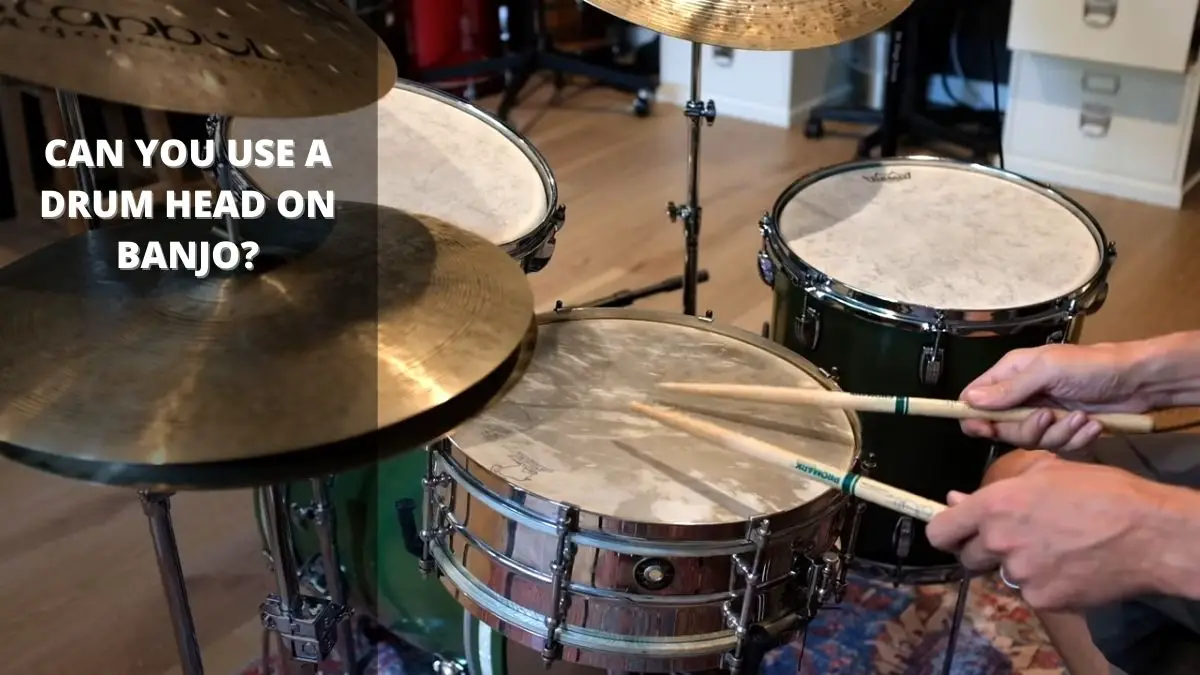Banjos are typically acoustic guitar-like instruments that are played with a plectrum or a bone pick. The banjo has a deep, mellow tone that’s very distinctive in the musical world. The banjo is a great instrument to learn because it’s so easy to play. The only things you’ll need are a tuner and some good technique, and you can be playing in no time.
The first banjos were made of wood, but today they’re usually made of metal. There are also 3- and 5-string banjos which are very popular with beginners. Banjos are usually played with a flathead or clawhammer-type hammer.
Can You Use a Drum Head On Banjo?
A drum head on a banjo can be used to produce a wide variety of sounds. Drum heads are available in many different sizes, shapes, and configurations, so it is important to select the one that is best suited for your playing style.
The best way to practice is to play along with a metronome. If you don’t have one, try using a drum app or your phone to time yourself while you play. A good way to learn some basic skills is to play along with a recording of someone else playing the same music. A good source of recorded music is YouTube.
Thus, banjos can be used with drum heads instead of the traditional drumsticks to create a more percussive sound. There are some banjo players who swear by the sonic possibilities of using a drum head. However, if you’re thinking about trying this out, be sure to check your banjo’s specifications first to see if it’s compatible.
Do banjo heads wear out?
Yes, banjo heads wear out in different ways. Some banjo players may experience a gradual loss of tone and volume, while others may experience a sudden and dramatic loss of playing ability.
Banjo heads can also become loose or damaged, which can lead to more pronounced losses in tone and volume. In some cases, banjo heads may even crack or break.
While these are all signs that a banjo head is nearing its end, there is no way to determine when it will completely wear out. Banjo heads are a popular and durable part of the instrument, but they can wear out over time.
Here are 5 tips to help keep your banjo head in good condition. There are a few things you can do to help keep your banjo head in tip-top shape.
- Clean the banjo head regularly: Get rid of any dust, dirt, or other particles that may accumulate on the head. This will help keep the head free from corrosion and make it easier to play.
- Keep the head lubricated: The banjo head is made of metal, and this can cause friction with other parts, especially strings or bridges. It is important to keep the head lubricated regularly to prevent it from becoming stiff and difficult to play.
- Don’t over-tighten: Over-tightening the strings can cause them to break, which can damage the banjo and your fingers.
- Don’t use too much friction: Too much friction can damage the banjo and your fingers.
- Don’t use too little friction: Using too little friction will make it difficult to play the banjo and may break strings or bridges.
Different types of drum heads that can be used with a banjo
There are many different types of drum heads that can be used with a banjo, each with its own unique sound.
- The steel drum head- This is a thin metal head that’s used on the rim of the drum when not being played. This gives a very percussive sound to the banjo and can be used with any kind of banjo. It produces a loud and penetrating sound.
- The resonator head- This is the type of drum head that’s used when playing a tuned banjo. It includes a metal rim that acts as an amplifier for the sound of the banjo. This is normally used on tenor guitars, guitars, and mandolins.
- The cowbell head- This is the type of drum head that’s used on a banjo when playing rollovers. This drum head works by vibrating and giving off sounds like cymbals. These are normally used with a drum set. It is designed to produce a ringing tone.
- The five-string head- This is the type of drum head that’s used when playing bluegrass and old-time music. It is designed to produce a more mellow tone when compared to a resonator head.
Pros and Cons
- Drum heads can provide a more accurate sound when playing the banjo. You can play a wide variety of songs when playing the banjo with a drum set.
- You can simulate other instruments when playing the banjo. They are designed to produce a simple and consistent sound. It allows you to play more complicated time signatures when playing the banjo.
- Drum heads are very easy to change and maintain. They can help to keep your banjo in tune when playing the banjo.
- Drum sets are easier to transport when compared to resonator heads. Also, drumheads are easier to plan and more affordable than resonator heads.
- Drum heads help you to break away from your typical style of playing the banjo.
- Drum heads can also increase the volume of the banjo, depending on the type and size of the head used.
- Heads can wear out over time, requiring replacement. Drum heads should be changed out often if you are playing regularly and in a band setting.
- Drum heads can be expensive, depending on the type of head and manufacturer.
Conclusion
A drum head can be used on a banjo. This is a great way to add some extra sound and variety to your playing. Experiment with different types of drum heads to find the sound that you are looking for. Don’t be afraid to get creative and have fun with your banjo.


